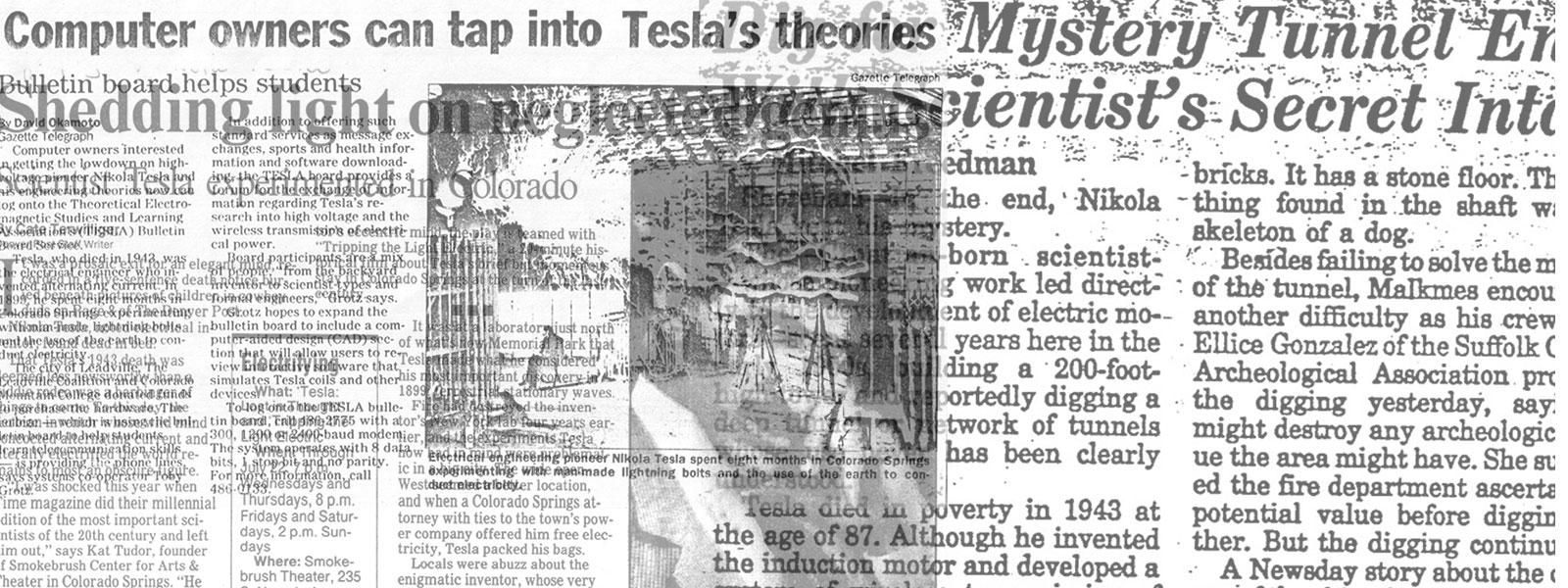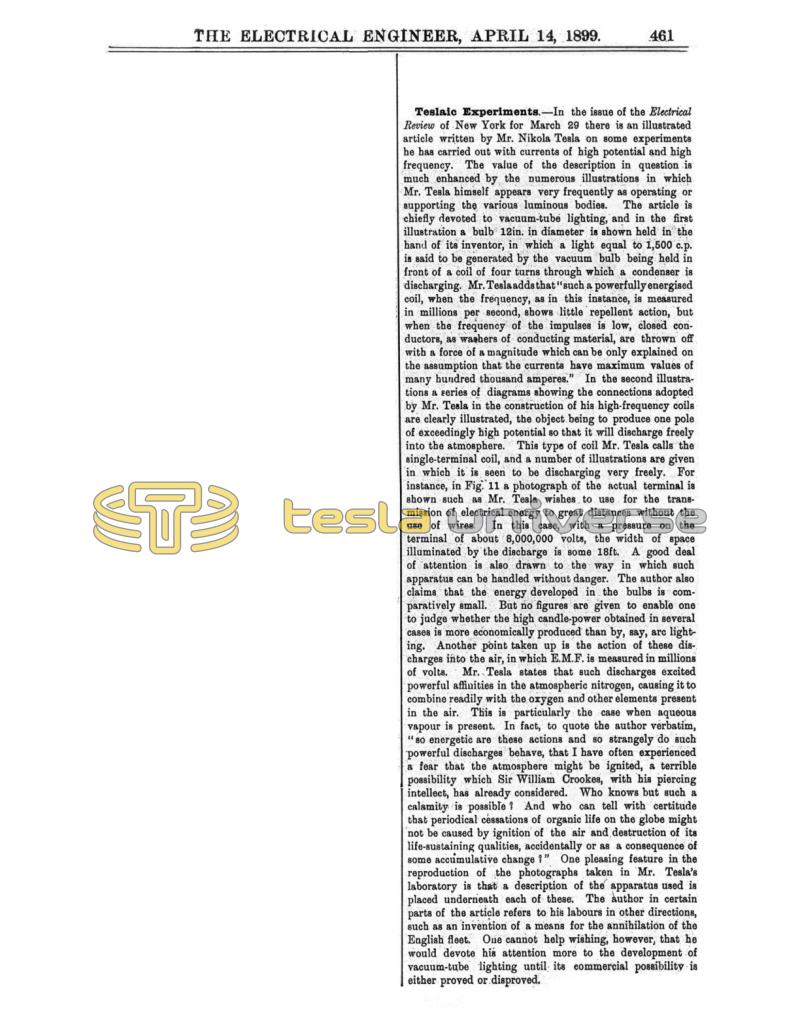
Nikola Tesla Articles
Teslaic Experiments
In the issue of the Electrical Review of New York for March 29 there is an illustrated article written by Mr. Nikola Tesla on some experiments he has carried out with currents of high potential and high frequency. The value of the description in question is much enhanced by the numerous illustrations in which Mr. Tesla himself appears very frequently as operating or supporting the various luminous bodies. The article is chiefly devoted to vacuum-tube lighting, and in the first illustration a bulb 12in. in diameter is shown held in the hand of its inventor, in which a light equal to 1,500 c.p. is said to be generated by the vacuum bulb being held in front of a coil of four turns through which a condenser is discharging. Mr. Tesla adds that “such a powerfully energised coil, when the frequency, as in this instance, is measured in millions per second, shows little repellent action, but when the frequency of the impulses is low, closed conductors, as washers of conducting material, are thrown off with a force of a magnitude which can be only explained on the assumption that the currents have maximum values of many hundred thousand amperes.” In the second illustrations a series of diagrams showing the connections adopted by Mr. Tesla in the construction of his high-frequency coils are clearly illustrated, the object being to produce one pole of exceedingly high potential so that it will discharge freely into the atmosphere. This type of coil Mr. Tesla calls the single-terminal coil, and a number of illustrations are given in which it is seen to be discharging very freely. For instance, in Fig. 11 a photograph of the actual terminal is shown such as Mr. Tesla wishes to use for the transmission of electrical energy to great distances without the use of wires. In this case, with a pressure on the terminal of about 8,000,000 volts, the width of space illuminated by the discharge is some 18ft. A good deal of attention is also drawn to the way in which such apparatus can be handled without danger. The author also claims that the energy developed in the bulbs is comparatively small. But no figures are given to enable one to judge whether the high candle-power obtained in several cases is more economically produced than by, say, arc lighting. Another point taken up is the action of these discharges into the air, in which E.M.F. is measured in millions of volts. Mr. Tesla states that such discharges excited powerful affinities in the atmospheric nitrogen, causing it to combine readily with the oxygen and other elements present in the air. This is particularly the case when aqueous vapour is present. In fact, to quote the author verbatim, “so energetic are these actions and so strangely do such powerful discharges behave, that I have often experienced a fear that the atmosphere might be ignited, a terrible possibility which Sir William Crookes, with his piercing intellect, has already considered. Who knows but such a calamity is possible? And who can tell with certitude that periodical cessations of organic life on the globe might not be caused by ignition of the air and destruction of its life-sustaining qualities, accidentally or as a consequence of some accumulative change?” One pleasing feature in the reproduction of the photographs taken in Mr. Tesla’s laboratory is that a description of the apparatus used is placed underneath each of these. The author in certain parts of the article refers to his labours in other directions, such as an invention of a means for the annihilation of the English fleet. One cannot help wishing, however, that he would devote his attention more to the development of vacuum-tube lighting until its commercial possibility is either proved or disproved.
